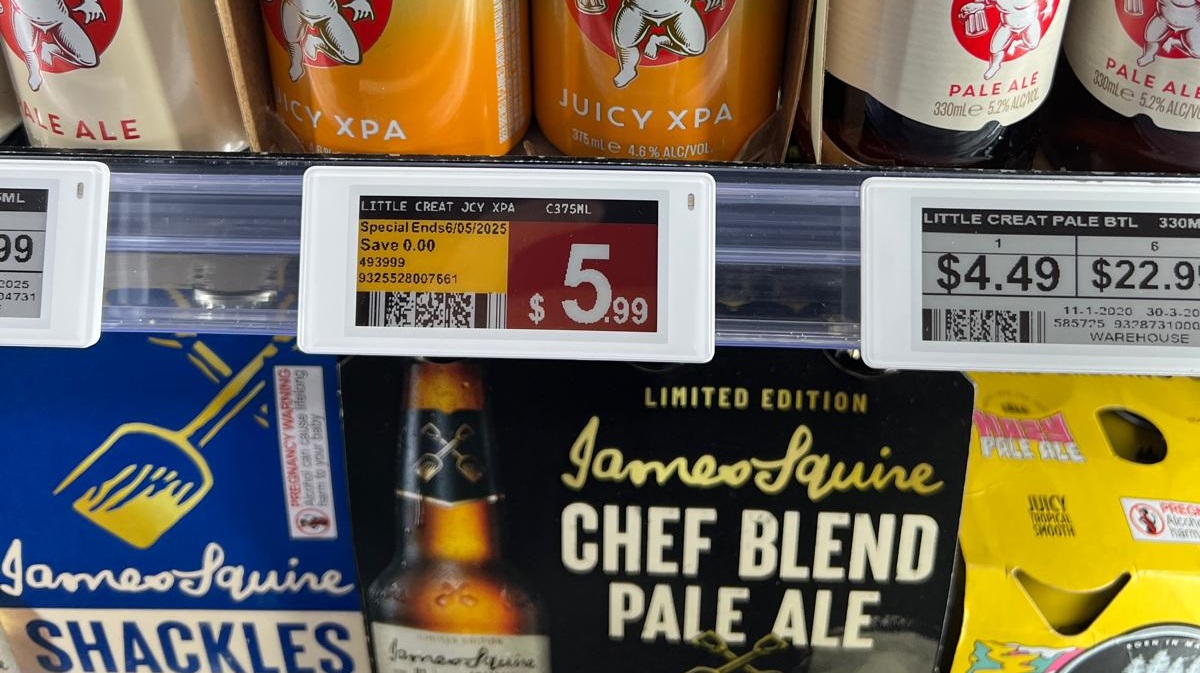The seemingly insignificant in-store shelf is becoming a channel for enhancing customer engagement. Global retailers are investing in digital shelf labels (DSL), bringing accuracy, transparency, and digital capabilities directly to the shelf. This represents a trend in the retail industry toward merging physical and digital environments to create a seamless customer experience.
Digital shelf labels were initially introduced as a replacement for paper labels, but technological advancements have brought increased flexibility and scalability. The in-store shelf is becoming a crucial touchpoint.
The Shelf as the First Point of Interaction
The physical shelf can actually have a significant impact on sales. Most purchase decisions are made in-store, often during product interaction. While traditional point-of-sale marketing has long been used to capture consumers' attention during this critical phase, its impact is often limited to static content.
Digital labels extend this influence. By directly connecting to pricing and promotion systems, DSL enables rapid refreshes, dynamic offers, and on-shelf interactions. Shoppers can scan QR codes or tap via NFC to access richer information or supplemental product recommendations. Unlike traditional point-of-purchase (POP) displays, digital labels integrate promotions and interactions into the shopping journey, improving cross-channel consistency while maintaining relevance and appeal at the shelf.
Digital Labels and Pricing Transparency
Price transparency is becoming increasingly demanding. Shoppers compare prices across multiple channels, often using mobile devices in real time. The rise of omnichannel commerce has further increased price transparency: consumers expect consistent information across online product listings, mobile apps, and in-store shelves.

Traditional paper labels struggle to keep up with the pace of retail pricing strategies. Promotions can take hours or even days to update across different locations. DSL eliminates this gap by enabling instant adjustments across thousands of SKUs. Retailers can launch nationwide promotions in minutes, respond to competitor pricing, or instantly adjust to supply fluctuations. The result is a more reliable customer experience. By eliminating price discrepancies, retailers not only protect margins but also deliver transparency.
Enriching the Customer Experience with Product Information
The modern retail experience is becoming increasingly diverse. When purchasing products, customers seek richer and more transparent information, whether driven by health, ethics, or sustainability considerations. Governments and regulators in multiple regions are reinforcing this shift with stricter labeling requirements.
Through QR codes, NFC tags, or integration with digital platforms, DSL can display nutritional data, sourcing details, or environmental impact scores. Accessing this information at the shelf changes how customers evaluate products and helps them make informed, responsible decisions.
For retailers, providing transparency not only meets compliance obligations but also aligns with consumer demands for authenticity and accountability.
Personalization and Interactivity at the Shelf
Digital retail enables a high degree of personalization, driving customer engagement that brick-and-mortar retailers struggle to replicate. Digital tags are one effective tool for bridging this gap.
Digital tags can deliver personalized promotions directly to shoppers. Interaction via NFC or QR codes allows consumers to interact with products in a way consistent with their online experience, while retaining the immediacy of a physical store environment.
This convergence creates a new, less static shelf edge.
Operational Efficiency as a Driver of Customer Experience
While DSLs are often used to reduce labor costs and improve efficiency, their impact extends directly to customer perception.
Through automated updates, DSL reduces human error and speeds up execution. Manual relabeling, which once took hours, can now be completed in minutes across stores. At the same time, store associates are freed from repetitive tasks, and operational benefits ultimately translate into a smoother, more engaging shopping experience.
The adoption of electronic labels is accelerating globally, spanning the grocery, electronics, DIY, drugstore, and fashion sectors. Early deployments were driven by cost savings, but their value proposition has expanded with the increasing sophistication and digital integration of the retail industry.
With the convergence of retail media networks, data analytics, and artificial intelligence at the shelf edge, the role of DSLs will deepen. Digital labels are poised to become part of a broader ecosystem where shelves do more than just display products—they deliver targeted content, generate insights, and support new revenue models.
Contact us, explore how digital shelf labels can reshape your in-store experience strategy.











